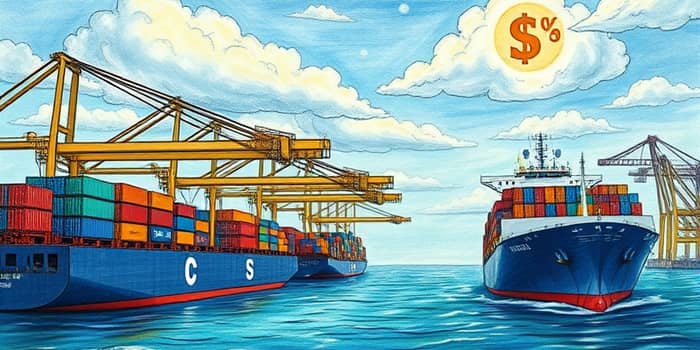
Realignments in exchange rates create ripples across national economies, affecting everything from factory orders to consumer prices. Understanding these movements helps businesses and policymakers navigate the ever-changing landscape of global trade.
By examining both theoretical frameworks and real-world data, we reveal how long-term export performance hinges on the delicate balance of currency values, resource allocation, and firm-level dynamics.
Currency realignment refers to a significant change in a country's exchange rate relative to its trading partners. Adjustments can occur through central bank actions or market-driven forces, reflecting shifts in supply and demand for currencies.
Export competitiveness measures a nation’s ability to sell goods abroad at profitable prices. It influences employment, trade balances, and broader economic stability, making it a focal point for governments and business leaders seeking sustainable growth.
The real effective exchange rate (REER) is the standard gauge for currency competitiveness. It adjusts nominal exchange rates to account for inflation differentials with major trading partners, offering a more accurate picture of export price attractiveness.
When a currency depreciates:
Conversely, appreciation leads to:
Exchange rate changes also drive resource allocation between tradable sectors (like manufacturing) and non-tradable sectors (like services), thereby influencing the long-term structure of the economy.
Recent World Bank evidence shows that since 2020, over 30 low- and middle-income countries experienced currency depreciations of at least 10%. Yet their export growth responded more slowly and weakly to these depreciations than to comparable appreciations.
Several factors contribute to this asymmetry:
An overvalued currency makes domestic goods more expensive on world markets, undermining export sectors. Persistent overvaluation often leads to declining manufacturing shares and reduced economic diversification.
In contrast, an undervalued currency can stimulate exports by making products cheaper abroad. Countries like Tanzania and Ethiopia have demonstrated that sustained undervaluation correlates with increased manufacturing output and greater export diversification, though this strategy carries its own risks.
According to new-new trade theory, currency shifts can have dual impacts. A weaker currency may reduce export value in domestic currency terms, squeezing firm profits, while simultaneously driving innovation and efficiency through intensified competition.
These offsetting forces make the net effect of currency realignments industry-specific and dependent on firm dynamics, market entry costs, and the competitive structure of export markets.
Many exporters, especially in manufacturing, rely heavily on imported inputs. When a currency weakens, the cost of these inputs rises, potentially eroding gains from improved export prices.
The final impact on competitiveness hinges on:
Policymakers in developing economies face a delicate trade-off. Avoiding currency overvaluation is generally beneficial for exports, yet sustained undervaluation can fuel inflationary pressures and provoke trade tensions.
Exchange rate volatility also raises uncertainty, increasing transaction costs and discouraging both domestic and foreign investment. A sound policy framework must combine currency stability with structural reforms that enhance productivity and infrastructure.
Export competitiveness emerges from a complex interplay of exchange rates, cost structures, and policy choices. While currency realignments matter, they are not a cure-all for trade challenges.
Building durable export growth requires a balanced approach that addresses macroeconomic stability, infrastructure quality, and firm-level productivity. Only by tackling both currency and structural fundamentals can countries fully harness the benefits of global trade.













